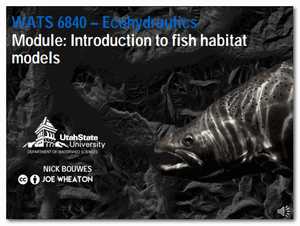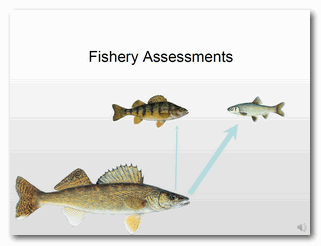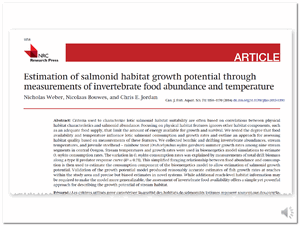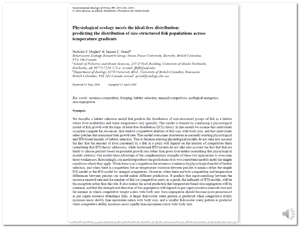Background
Several approaches have been used to understand and model fish habitat relationships. Here I provide a brief introduction to some of those approaches and to associated terminology. I then suggest alternatives to Habitat Suitability models that we are going to explore in later lectures that include other vital components of fish habitat such as food and temperature. The next lecture introduces bioenergetics models which are widely use to evaluate how food, temperature, activity, diet, & fish size affect growth rates of fishes. We provide enough background here to allow you to understand and operate a bioenergetics model to evaluate factors affecting growth which is often used as surrogate to fitness.
Resources
Lectures & Slides
Fish Habitat Models Intro Lecture
1 hour and 13 minutesBioenergetics Lecture
48 minutesReview of Weber et al. 2014
22 minutesReview of Hughes and Grand 2000
24 minutesReadings
We will discuss:
- Hughes NF, Grand TC. 2000. Physiological Ecology Meets the Ideal-free Distribution: Predicting the Distribution of Size-structured Fish Populations Across Temperature Gradients. Environmental Biology of Fishes 59 : 285–298. DOI: 10.1023/A:1007608720672. PDF
- Weber N, Bouwes N, Jordan CE. 2014. Estimation of salmonid habitat growth potential through measurements of invertebrate food abundance and temperature. Jonsson B (ed). Canadian Journal of Fisheries and Aquatic Sciences 71 : 1158–1170. DOI: 10.1139/cjfas-2013-0390. PDF



